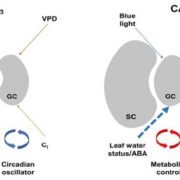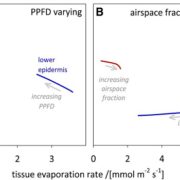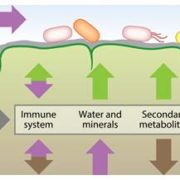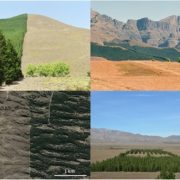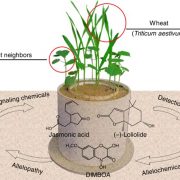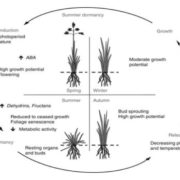Increased atmospheric vapor pressure deficit reduces global vegetation growth (Science Advances)
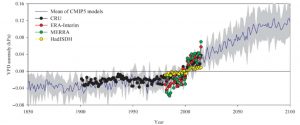 Plant scientists know that when the air at the leaf surface is dry, the plant will tend to close its stomata, but we tend to think of this as a relatively localized effect. Yuan et al. have explored the global trends in vapor pressure deficit (VPD; difference between saturated and real water content of the air) and found that the VPD of vegetated areas has been rising notably since the late 1990s. This anomaly is due to both increased temperatures (which increase saturated water vapor pressure) and decreased actual water vapor pressure. As water vapor over land is mostly derived from oceanic evaporation, they also looked at this trend and found a transition from upward to downward also in the late 1990s. The authors observe that the increase in VPD is likely to have contributed to forest mortality (in part due to reduced carbon assimilation, as well as drought effects) in the past decades, and also that most current models fail to include the effect of VPD, meaning they are likely to overestimate future plant growth and carbon sequestration. (Summary by Mary Williams) Science Advances 10.1126/sciadv.aax1396
Plant scientists know that when the air at the leaf surface is dry, the plant will tend to close its stomata, but we tend to think of this as a relatively localized effect. Yuan et al. have explored the global trends in vapor pressure deficit (VPD; difference between saturated and real water content of the air) and found that the VPD of vegetated areas has been rising notably since the late 1990s. This anomaly is due to both increased temperatures (which increase saturated water vapor pressure) and decreased actual water vapor pressure. As water vapor over land is mostly derived from oceanic evaporation, they also looked at this trend and found a transition from upward to downward also in the late 1990s. The authors observe that the increase in VPD is likely to have contributed to forest mortality (in part due to reduced carbon assimilation, as well as drought effects) in the past decades, and also that most current models fail to include the effect of VPD, meaning they are likely to overestimate future plant growth and carbon sequestration. (Summary by Mary Williams) Science Advances 10.1126/sciadv.aax1396


